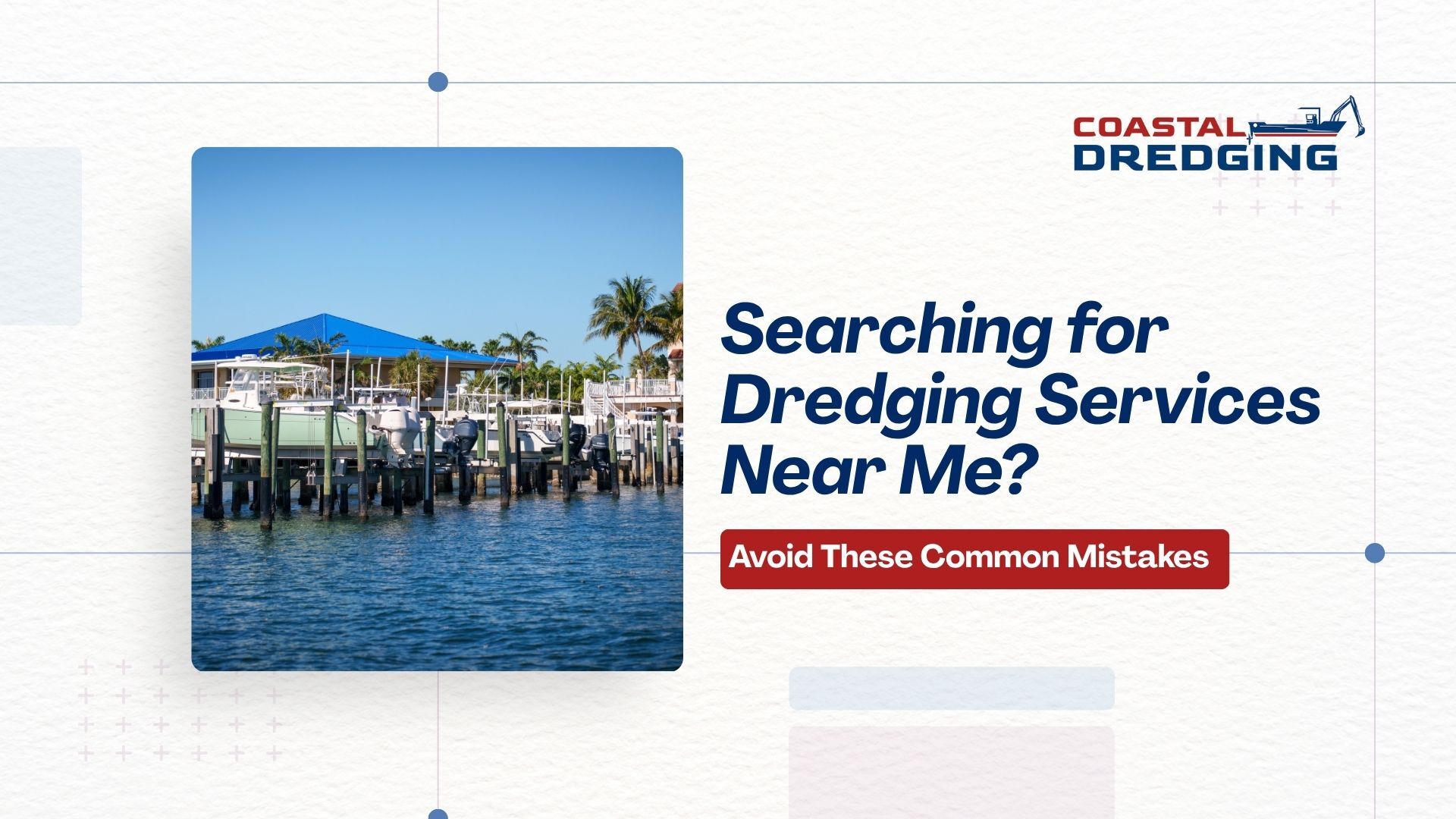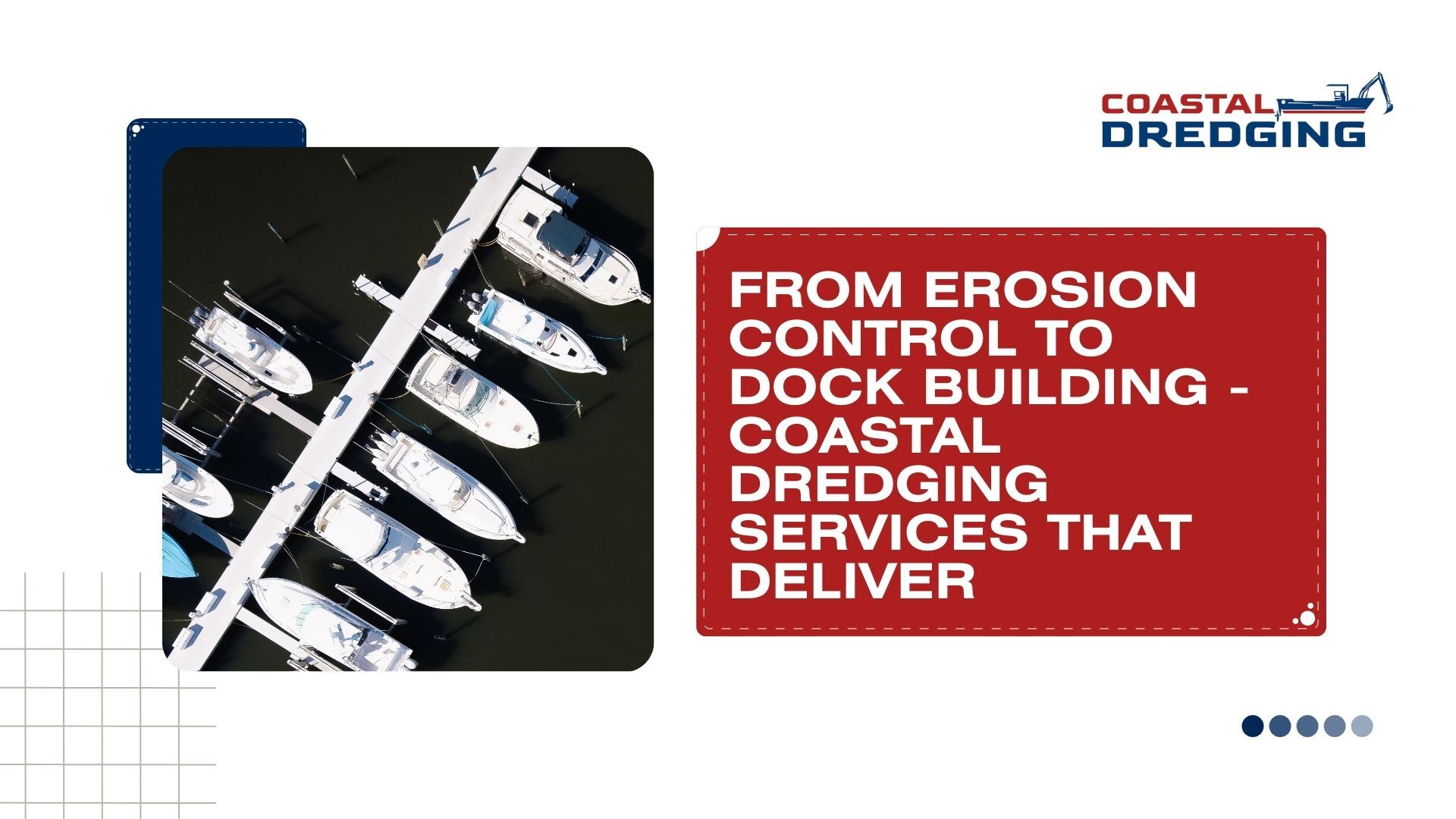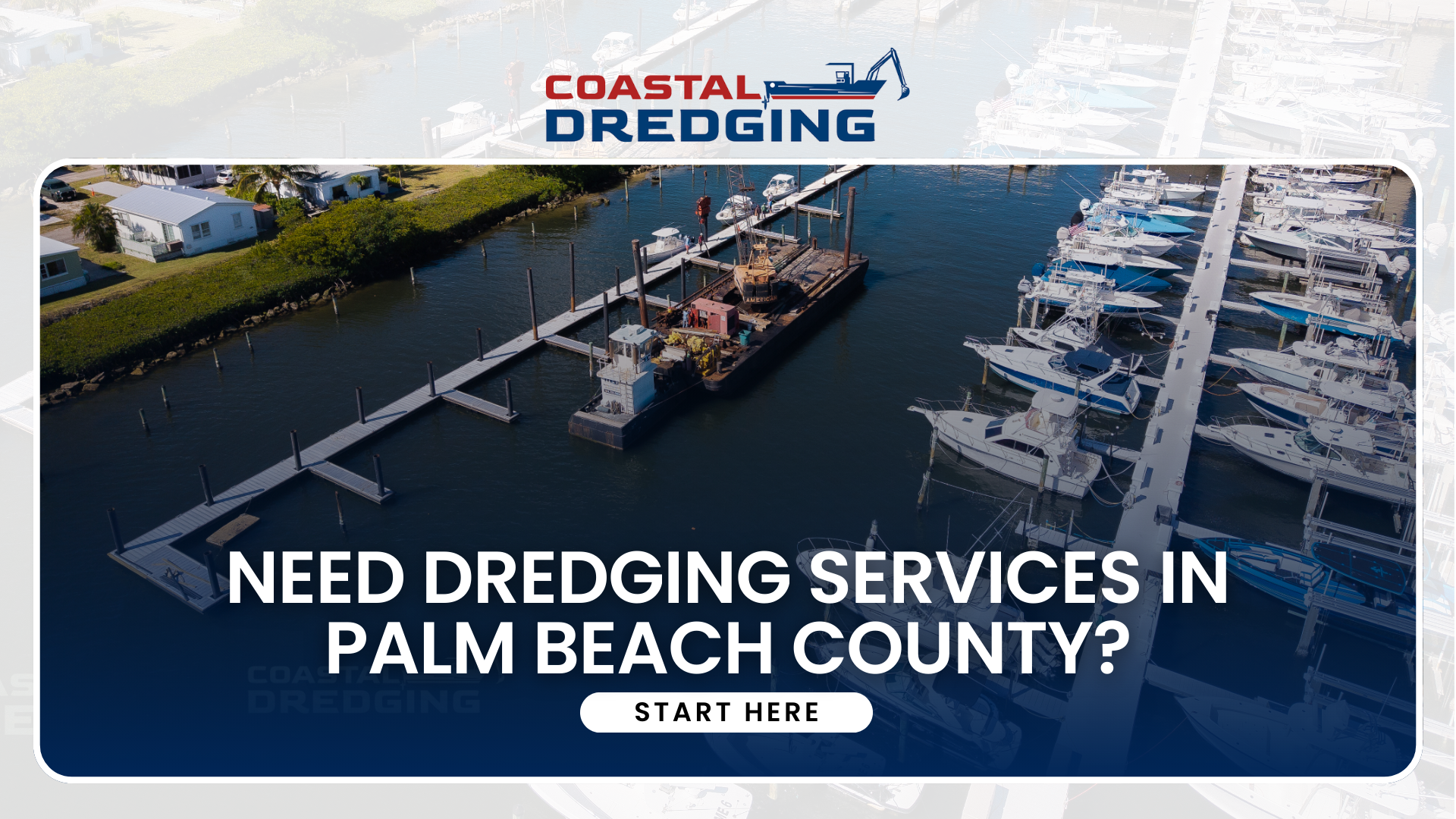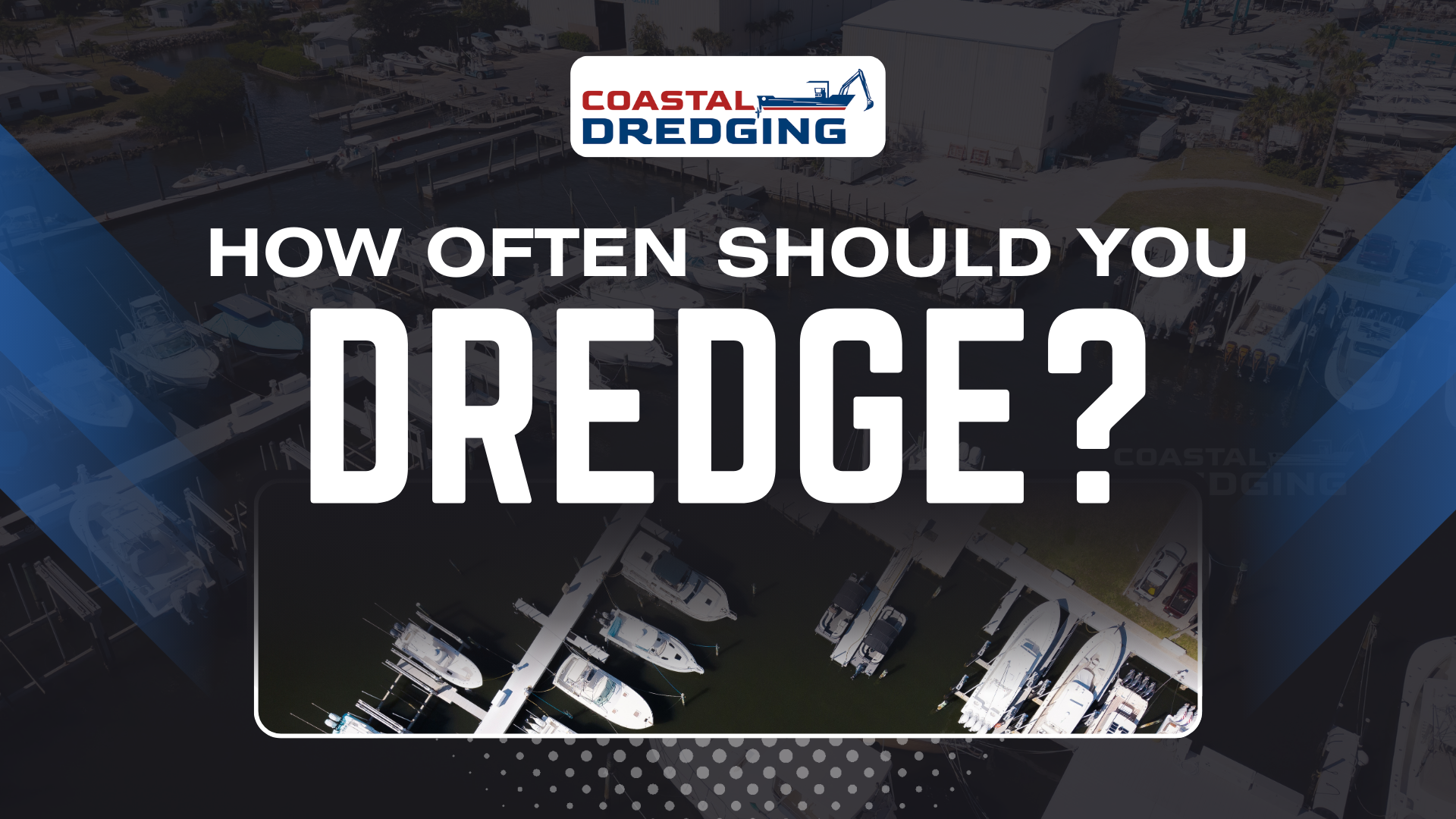Dredging is a very important maintenance service, whether it is for a dock, marina, or boat lift. It cleans up excessive sediment, recovers safe water levels, and makes your property functional. However, Most unscrupulous property owners commit expensive errors when contracting dredging companies.
This blog will also inform you about the most prevalent errors to be avoided and the proper decision that should be made when you are seeking dredging services in your area.
Why Dredging Matters
Water bodies such as docks, canals, and marinas accumulate sediment with time. Organic matter, sand, and silt accumulate and cause water to become shallow. This accumulation may obstruct the entry of the boats, cause damage, and create safety risks.
These problems are avoided by frequent dredging. It adds back the depth, enhances navigation, and the value of the property. Lack of it can lead to costly damages and a scarce supply of water.
Mistakes That Should be Avoided when Searching for Dredging Services
1. Choosing Price Over Quality
Most property owners have fallen into the trap of using the lowest-priced service. Although price comes into the picture, cheap is cheap and may lead to using poor equipment, inexperienced crews, and unfinished outcomes. Low-priced dredging might leave a residual of sediment, so you have to do the job again.
Rather, seek a provider who has the appropriate tools, licenses, and a record of success. Investing in quality is a guarantee of sustainability.
2. Ignoring Local Experience
Waterways are not always identical. One in charge is the local subcontractor who knows the local sediment, tides, and regulations. Hiring an expatriate can lead to procrastination and obedience.
A dredging company that knows your area should be present, and there should be a company that has been working on the same project in your area. This minimizes the risks and makes the process smoother.
3. Skipping Permits and Regulations
In most places, dredging is a process that needs environmental and legal clearances. There are those property owners who do not bother with this step by believing that it will save them time. The truth? Skipping permits can lead to fines, work stoppages, and costly legal trouble.
Work with a company that handles permitting for you. They will ensure your project complies with environmental and government rules.
4. Overlooking the Type of Dredging Needed
Different projects require different dredging methods. For example:
- Dock dredging maintains safe and accessible areas.
- Dredging of the boat lifts is done to maintain smooth lifts.
- Marina dredging clears slips and channels for boats.
If you choose a contractor without the right equipment for your specific needs, the project may not meet your expectations. Always confirm that the company offers the exact service you require.
5. Not Checking References or Reviews
Too many property owners hire a contractor without looking into past projects. References, testimonials, and reviews give a decent amount of information on reliability and outcomes.
Failure to do this may result in low-quality work and wastage of money. Always research customer experiences before making a decision.
6. Ignoring Long-Term Maintenance
Some people think dredging is a one-time job. In reality, sediment keeps building up. Unless you prepare to do continuous maintenance, you will end up having the same problems.
Enquire your contractor regarding any maintenance and long-term dredging plans. This is a proactive solution that will save you money and leave your property secure every year.
7. Forgetting to Ask About Disposal
After the removal of sediment, it has to be disposed of properly. Other companies do not clarify what should be done with the dredged material. Mismanagement of disposal may destroy the environment and cause additional issues.
Another question to always ask the contractor is how they dispose of waste. Eco-friendly practices guarantee a good adherence to the policies and safeguard your local ecosystem.
8. Waiting Until Problems Pile Up
Several property owners do not dredge until the situation is a dire case. At that time, the water can be too shallow, the equipment might have been destroyed, and the costs can be extremely high.
Wait until the boats are not moving or the docks are not usable. Plan to beat emergencies.
Benefits of Hiring the Right Dredging Services
When you avoid these mistakes, you gain several benefits:
- Safe Access: Boats and lifts function smoothly.
- Stronger Property Value: Well-maintained water access increases property value.
- Environmental Protection: Proper dredging safeguards shorelines and canals.
- Peace of Mind: When you are aware that your dock or marina is in good condition, this helps to alleviate stress.
How to Choose the Best Dredging Services Near You
A search for dredging services near me uses the following tips:
- Check Local Experience: Make them familiar with your waterways.
- Question Equipment: The appropriate equipment is important for good work.
- Confirm Permits: It will be an assuring company that will handle approvals.
- Review References: See actual customer review.
- Discuss Disposal: Learn about handling material.
- Plan Maintenance: Select a company that will provide continuous assistance.
In this way, you will not make any mistakes and get a partner whom you can rely on.
Take Action Now – Protect Your Waterway
- Dock Dredging: Provide a secure entrance.
- Boat Lift Dredging: Make certain that boat lift operations run well.
- Marina Dredging: Maintain completely passable waterways and slips by marina dredging.
- Freshwater Dock & Lift Dredging: Safeguard your beach and canal.
Get your property in top shape before the problems pile up. Contact us at (561) 794-1114 or reserve your service online through Coastal Dredging and protect your coastline now!
Frequently Asked Questions
What are common dredging mistakes?
Common mistakes include hiring based on price only, ignoring permits, choosing inexperienced contractors, and waiting too long for service. Such mistakes result in increased costs, inappropriate outcomes, and unjustified lawsuits or safety concerns.
What are the three factors that affect dredging works?
The main factors include water depth, sediment type, and environmental conditions. These factors will dictate the appropriate equipment, process, and disposal strategy required to accomplish dredging in a safe, effective, and in accordance with locally stipulated regulations.
What are dredging services?
Dredging services remove accumulated sediment from docks, marinas, and waterways. They restore depth, improve navigation, protect property, and maintain safe conditions for boats, lifts, and shoreline areas affected by buildup over time.
What are the two major forms of dredging?
These are mostly mechanical and hydraulic dredging. In mechanical applications, buckets or clamshells transport material using a scoop, whereas in hydraulic applications, the transport is done by suction or using pumps to move sediment through pipes or hoses.
What is the minimum depth of dredging?
Minimum dredging depth is based on project requirements and the types of vessels. Depths of 3 to 5 feet are observed in most of the residential areas. Bigger marinas and canals can be deeper to accommodate the sizes of boats.




